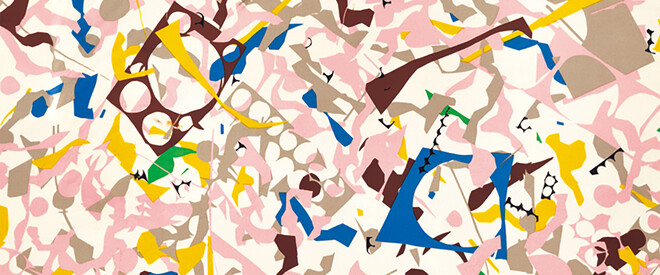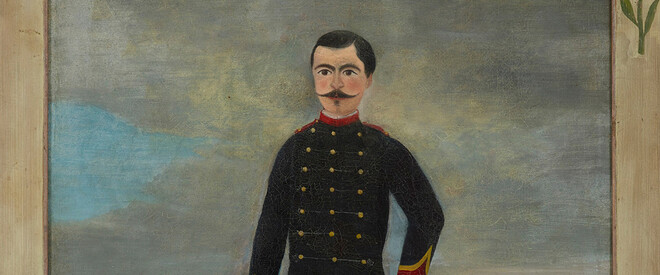200 Treasures including the Konjikido(Golden Hall) of Chusonji Temple (a National Treasure).
Hiraizumi is the Northeastern Capital of Michinoku" that took form during the approximately 100-years period from the late 11th century to the 12th century as a result of the efforts of four generations of the Oshu Fujiwara clan. They built this society upon the foundations of Buddhist principles and constructed unique scenery and highly advanced culture.
The first generation founder, Fujiwara no Kiyohira (1056?1128), unified the northeastern region around Hiraizumi at its center and devised to improve the status of this region. Kiyohira's philosophy was an ideology of peace and equality and in order to realize this ideal, he drew upon the image of the Pure Land advocated by Buddhism and constructed a great many temples and gardens in Hiraizumi, truly creating a cultural space that could be called a "Pure Land in the Present World."
The many cultural treasures of the time include the Konjikid? (Golden Hall) of Ch?son-ji, which has no equivalent anywhere else in Japan; the "Issaiky? Sutras in Gold and Silver on Indigo Paper," which are the only known examples produced in Japan; the Heian lacquerware masterpieces "Incense Table with Mother-of-Pearl Inlay" and "Octagonal Shumidan Dais with Mother-of-Pearl Inlay"; the masterpiece of metalwork "Gilt Bronze Keman Decorative Pendant Disc," and the Chinese W?t?ish?n-style "Monju Riding a Lion with Four Attendants Figures." These objects demonstrate an exceptional unification of richly international design and technique with Japanese aesthetic sensibilities and solidify the position of Hiraizumi on the far eastern end of the transmission of Buddhist culture over the Silk Road.
The current exhibition presents a comprehensive look at the significance and appeal of the world of the "Hiraizumi Pure Land," through the exhibition of their famous treasures and historical documents, of particular significance as it now seeks the designation of UNESCO World Heritage Site as the "Historic Monuments and Sites of Hiraizumi," comprised of Ch?son-ji and M?tsu-ji temples, Takkoku no Iwaya cave temple and the ruins of the Yanagi no Gosho Palace, the obsolete temple at Ch?jagahara, Shirotoritate, Honedera Village manor, and others.
In closing, we are deeply thankful to collections that have submitted their precious cultural properties on the occasion of this exhibition, as well as the various individuals who have granted their generous cooperation in this project.
The first generation founder, Fujiwara no Kiyohira (1056?1128), unified the northeastern region around Hiraizumi at its center and devised to improve the status of this region. Kiyohira's philosophy was an ideology of peace and equality and in order to realize this ideal, he drew upon the image of the Pure Land advocated by Buddhism and constructed a great many temples and gardens in Hiraizumi, truly creating a cultural space that could be called a "Pure Land in the Present World."
The many cultural treasures of the time include the Konjikid? (Golden Hall) of Ch?son-ji, which has no equivalent anywhere else in Japan; the "Issaiky? Sutras in Gold and Silver on Indigo Paper," which are the only known examples produced in Japan; the Heian lacquerware masterpieces "Incense Table with Mother-of-Pearl Inlay" and "Octagonal Shumidan Dais with Mother-of-Pearl Inlay"; the masterpiece of metalwork "Gilt Bronze Keman Decorative Pendant Disc," and the Chinese W?t?ish?n-style "Monju Riding a Lion with Four Attendants Figures." These objects demonstrate an exceptional unification of richly international design and technique with Japanese aesthetic sensibilities and solidify the position of Hiraizumi on the far eastern end of the transmission of Buddhist culture over the Silk Road.
The current exhibition presents a comprehensive look at the significance and appeal of the world of the "Hiraizumi Pure Land," through the exhibition of their famous treasures and historical documents, of particular significance as it now seeks the designation of UNESCO World Heritage Site as the "Historic Monuments and Sites of Hiraizumi," comprised of Ch?son-ji and M?tsu-ji temples, Takkoku no Iwaya cave temple and the ruins of the Yanagi no Gosho Palace, the obsolete temple at Ch?jagahara, Shirotoritate, Honedera Village manor, and others.
In closing, we are deeply thankful to collections that have submitted their precious cultural properties on the occasion of this exhibition, as well as the various individuals who have granted their generous cooperation in this project.

